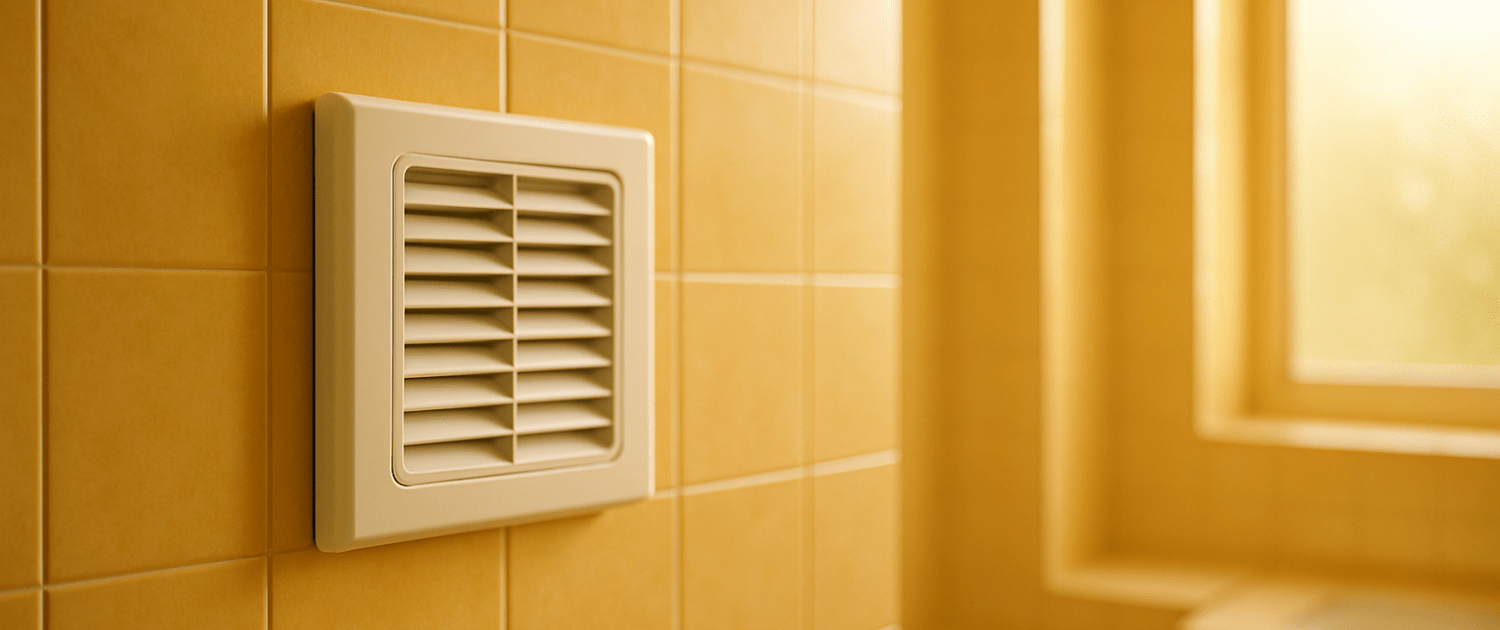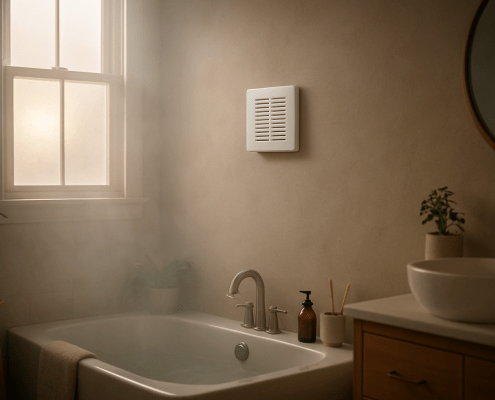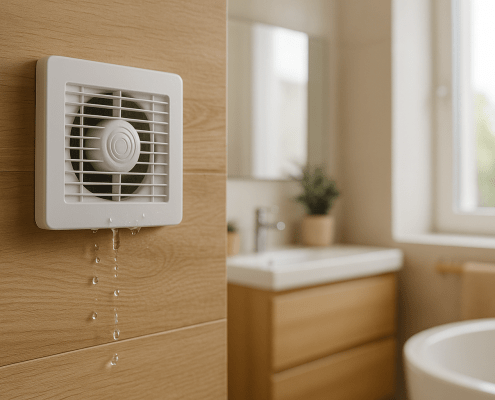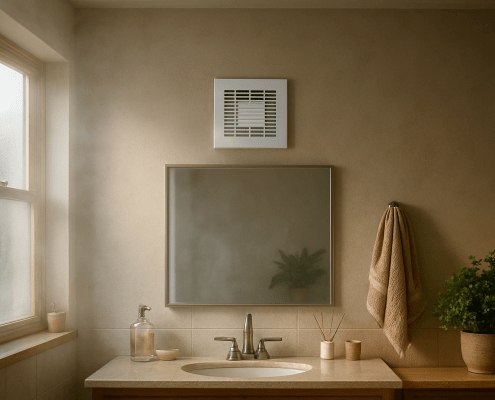Fix a Bathroom Fan That Keeps Running After Lights Are Off
Steven E / Wednesday July 2, 2025
You turn off the bathroom light, step into the hallway… and the fan keeps running like it’s got a mind of its own. Annoying? Absolutely. Mysterious? Maybe. But here’s the thing: that stubborn fan might be trying to tell you something. Whether it’s a sneaky setting, faulty wiring, or a feature you didn’t know existed, there’s a reason it won’t turn off, and we’re going to uncover it. Stick around, because by the end of this article, you’ll know exactly why your fan won’t stop and how to take back control of your bathroom.
The information in this article may not apply to your specific appliance model. We recommend consulting your manufacturer’s documentation or contact us with any questions.
Why Is the Bathroom Fan Still Running?
To solve the problem, it helps to first understand why a fan would run independently from the light. Not all fans are designed to turn off at the same time as the light switch. Here are the most likely reasons:
- Humidity-sensing fan that automatically stays on until moisture drops
- Time delay switch programmed to run for a set period after the light is turned off
- Incorrect wiring is causing the fan to receive constant power
- A malfunctioning control board inside the fan
- A defective switch that doesn’t break the fan circuit properly
- The thermal sensor keeps the fan on until the motor cools down
Let’s break down each scenario, figure out how to identify it, and go over the DIY steps to fix the issue.
Step 1: Determine Whether It’s a Feature or a Problem
Before grabbing any tools, check the type of bathroom fan you have. Many modern fans are designed to run after the light turns off, on purpose.
Do You Have a Humidity-Sensing Fan?
If the fan turns on by itself or stays on after you leave the room, you might have a humidity-sensing unit.
- Look for a label or brand name inside the grille (you may need to remove it).
- Check for a small sensor (often a dome or slot near the fan housing).
- If you have a model number, search online to see if it’s a sensor-equipped model.
These fans stay on until humidity drops below a set level (often adjustable). If this is the case, the fan is doing its job, ventilating the bathroom after showers to prevent mold and mildew.
Do You Have a Delay Timer?
Some fans are wired with a time-delay switch, which allows the fan to run for 5–30 minutes after being turned off. This is a helpful feature for clearing moisture and odors, but it can confuse users if they aren’t aware it’s installed.
- Look at your wall switch. Is it digital or programmable?
- Do you have a separate button or rocker switch labeled “fan” or “timer”?
- If it’s a smart switch, check the manual or app settings for delay options.
If your fan shuts off eventually, after a consistent period, it’s likely a time delay, not a malfunction.
Step 2: Listen and Wait
This step is easy but important: wait and listen. A fan that runs for exactly 10, 15, or 30 minutes after turning off the light is probably working on a timer. A fan that runs indefinitely or randomly likely needs attention.
Step 3: Test the Wall Switch
A faulty or miswired switch is a very common reason a fan runs nonstop.
- Turn off the breaker to the bathroom.
- Remove the switch plate and gently pull out the switch.
- Use a voltage tester to ensure there’s no power.
- Examine the wiring. A basic switch should have two hot wires (line and load) and possibly a ground.
- If your fan and light are on the same switch, there may be one wire feeding both.
- If they are on separate switches, make sure the fan wire is not bypassed to constant power.
- Check for any loose connections or burnt terminals.
If the switch looks worn or you want to upgrade to a timer switch, now’s a great time to replace it.
Step 4: Check the Wiring at the Fan Housing
If the switch seems fine, the next place to look is inside the fan unit itself.
- Turn off the power at the breaker.
- Remove the fan grille and access the housing.
- Carefully inspect the wiring connections.
- Check if the fan and light are on separate circuits.
- Check if the fan’s hot wire is always powered, even when the switch is off.
- Check if the wire nuts are secure, and if any wires are scorched or loose
Look for a wiring diagram inside the housing or consult the manufacturer’s website. Some fans use internal control boards, and if that board fails, it can get “stuck” in the on position.
When to Replace the Fan
If your fan continues to run after checking the switch and wiring, and you’ve ruled out humidity or timer features, it might be time for a new fan.
Signs You Need a Replacement:
- The fan is over 10–15 years old
- Loud or inefficient operation
- Internal parts are burned out
- The control board is not responsive
- Replacement parts are no longer made
Modern fans are quieter, more efficient, and often easier to install. Many are designed for retrofits and come with clear instructions and features like LED lighting, nightlights, and sealed dampers.
Where To Find Us
If you need any replacement parts for your appliances, you can enter your model number at AppliancePartsPros.com to locate and order them quickly. Most orders arrive in just two business days, and we have tons of great information in our repair help section and YouTube videos to help you troubleshoot.
Stay connected with the latest DIY tips, tutorial videos, and repair guides by following us on Facebook, Instagram, and Twitter. We love hearing about your repair stories and successes. If you need more help or want personalized guidance, feel free to reach out. We’re ready to help you take on your next project with confidence!
With nearly a decade of experience in providing top-notch customer service regarding appliance parts and repair, Steven enjoys sharing practical advice, troubleshooting tips, and interesting information to help readers stay informed.





